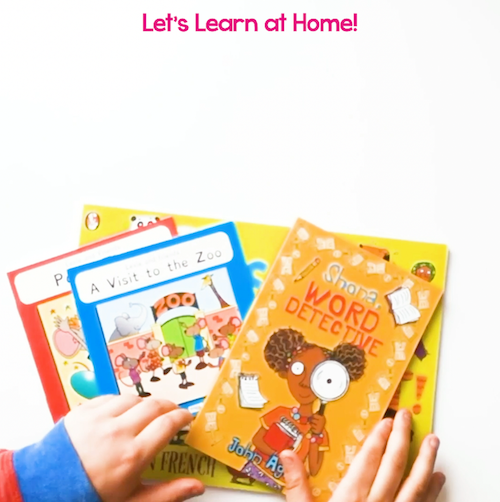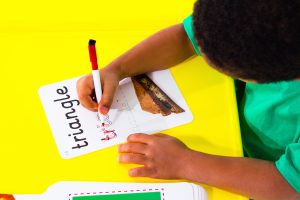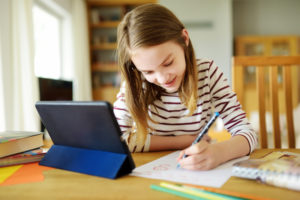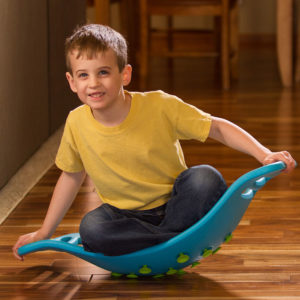No products in the cart.
7 Tips for Kids Learning at Home
April 10, 2020

Children learning at home? With the current Coronavirus pandemic and subsequent lockdown, many children around the world are now staying home to learn. For lots of families, this will be a new experience and one potentially approached with uncertainty. And yet, it needn’t be. This blogpost will highlight 7 ways to make home learning an enjoyable experience for children and parents. You can find useful ideas in the video above and in the following blogpost.
1. Learn Something New with Educational Toys
With quarantining, social distancing and self-isolation measures taking place worldwide, why not take some time to help your kids learn something new? This can be a new skill such as learning about coding for kids, studying a new language or developing drawing skills. For example, educational toys such as Artie Coding Robot are brilliant for inspiring young minds and sparking an interest in coding for kids.
With WordUnited’s write and wipe flashcard kits, learning a language has never been easier. Equipped with pens, stickers and real-life images, the sturdy flashcards are presented in a child-friendly box. Check out this set of flashcards for kids learning French. For kids wanting to develop their artistic skills, step-by-step drawing books are incredibly handy. From animals to cartoons, children can improve fine motor skills and hand-eye coordination whilst having fun with drawing books.
2. Make Reading Fun for Kids
Discover the joy of reading whilst learning at home with engaging books for kids. Little ones will love sensory baby books such as high-contrast board books, Elmer classics and the ‘That’s Not My’ series. This ‘Guess How Much I Love You’ snugglebook is the perfect bedtime story. Children may also love books with finger puppets, as they bring the story to life with their interactive nature. Older children can benefit from independent reading books for kids, with dyslexia-friendly books such as ‘Shona, Word Detective’ and ‘Space Ace’ presenting the perfect introduction to reading independently. For those reluctant readers, you can also try comic book stories.
3. Science Experiments at Home and Messy Play Ideas
Foster a love of learning by encouraging child-led learning when possible. This type of learning involves following your child’s interest and creating an engaging learning environment for them to thrive in. Children are naturally curious about the world and learning through play is a wonderful way to educate children. Read our blog about easy science experiments at home and discover how to make erupting baking soda volcanoes, chia seed slime and more. Similarly, create sensory activities for babies and toddlers with these messy play ideas, including rainbow spaghetti and homemade paint recipes.
4. Using IT for Learning with Free Printables and Apps
Make use of free online materials for home learning. Though home schooling may be a new experience for some families, there are thousands of parents who home educate their children each year. Websites such as Home Education UK and BBC Bitesize provide guidance and support for teaching kids at home. Plus, you can access hundreds of free teaching materials and home learning resources on WordUnited’s Free Resources Hub. With new free printables added weekly for all ages and subject areas across the curriculum, you can save and print worksheets from any device to nurture learning. WordUnited’s resources have always been – and will always be – free.
Children may also benefit from learning apps on iPads and tablets. Though such technology can sometimes be a cause of distraction, you can make screen-time learning time with educational apps. Take a look at ‘Spelling Bee’ and ‘Maths Champions Lite’ for free educational games. Additionally, fans of I Want My Hat Back will love these videos that bring the story to life!
5. Make Writing Fun with Primary Resources English Activities
Learning how to write can sometimes seem like a daunting task for little ones. Whether it is learning to write letters or stories, there are several useful tips to make writing fun when homeschooling kids. From drawing letters in sand to write and wipe flashcards and cursive handwriting books, learning to write doesn’t have to be dull. Browse a vast range of primary resources English writing and handwriting books here, including brilliant ‘Build a Story’ cards to help children create stories about magical castles or community helpers. Free handwriting printables can also be downloaded from WordUnited’s Free Resources Hub.
6. Online Learning Possibilities when Quarantining
With access to the internet whilst homeschooling, children can learn online with trusted tutors, family and friends. For families practicing social distancing and self-isolation, this helps children communicate with the wider community. You can use Skype or FaceTime for online lessons and may find it helpful to arrange virtual group lessons with parents of other children in the class.
7. Physical Development and Coordination Play at Home
When spending lots of time indoors, it is vital that children still exercise each day. If access to outdoor areas such as a garden is limited or unavailable, you can promote physical development with indoor activities. Create obstacle courses with items around the house, practice yoga and improve balance with wobble boards and Teeter Poppers. Hands-on learning and coordination play at home can boost fine motor skills. Children can manipulate play dough into shapes and letters, count with threading blocks or learn colours with sorting pies.
Discover thousands more learning resources, educational toys and books for kids at wordunited.com! For more learning ideas, head to wordunited.com/blog.



 01782 698558
01782 698558








